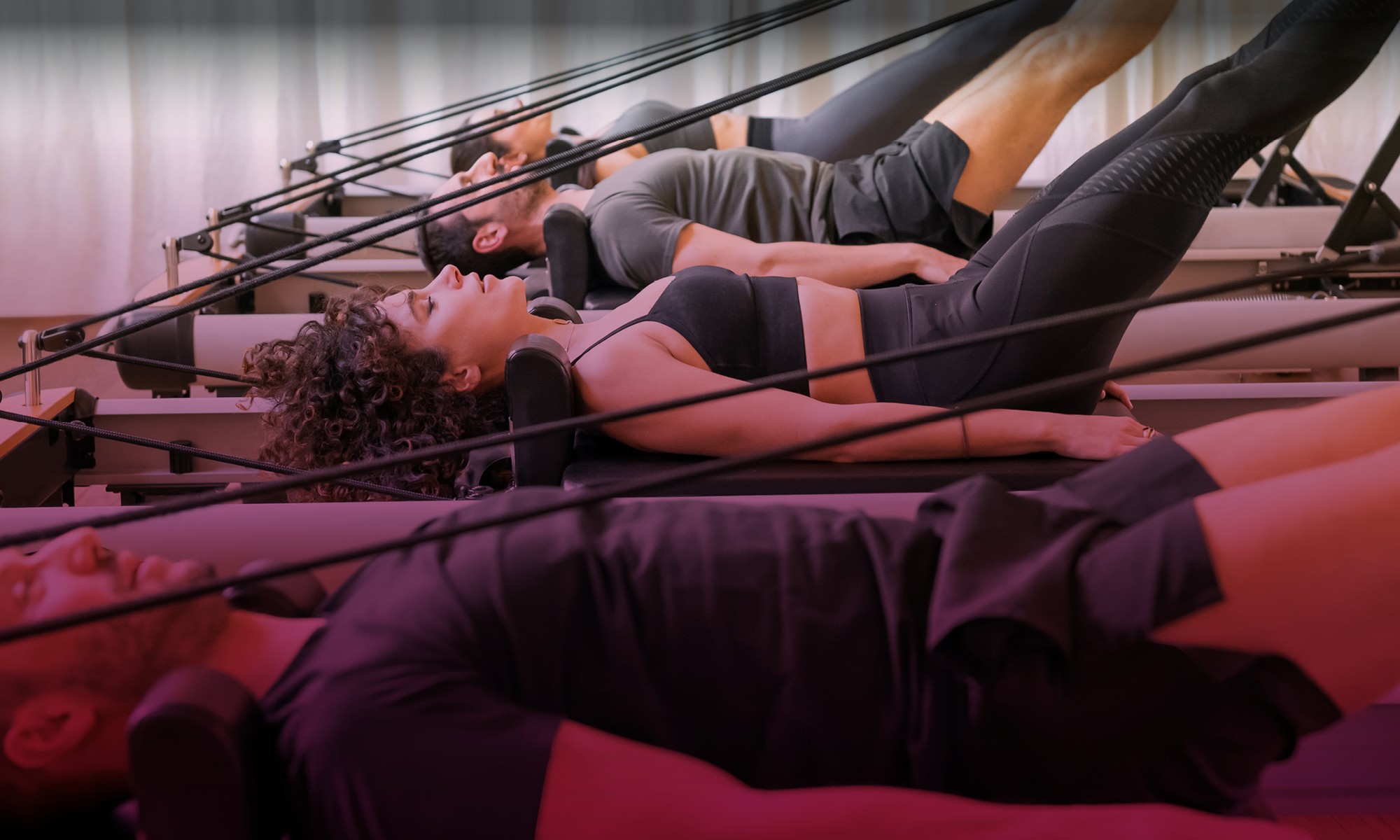
By: By Maria Veidash, Colorado Athletic Club Tabor Center Studio Fitness & Pilates Coordinator
Ski season is almost here and it’s time to get your body ready for fun on the slopes! Whether you’re preparing for downhill skiing, snowboarding, or cross-country skiing, Pilates develops the deep core stability, postural control, and muscular endurance to enjoy run after run and come back feeling strong again the next day.
What’s the difference between Pilates and traditional strength training?
Pilates exercises can use bodyweight for resistance and no additional equipment or can use a Reformer machine’s springs for low-impact, controlled resistance. Regardless of the tools used, Pilates movements emphasize muscular endurance, flexibility, balance, and core strength through a broad range of motion. In contrast, traditional strength training uses heavy loads (free weights or machines) to build maximal strength. External loads are needed because building strength, increasing muscle size, and increasing bone density require high force production.
Key point: Pilates focuses on less force and more control, whereas traditional weight training requires high force and resistance from external loads to increase strength.
What are the benefits of Pilates vs. traditional strength training?
Pilates and traditional strength training complement each other. The postural control and deep stabilization you gain from Pilates means you can direct your strength to your desired movements, like carving a perfect arc through the snow or keeping your knee perfectly aligned as you pound through moguls. Strength without control is a recipe for injury and dysfunction. Strength with control elevates performance, reduces injury risk, boosts the fun factor, and keeps you out on the slopes until last chair.
Both Pilates and traditional strength training utilize resistance to challenge your muscles apply adaptive stress to your bones and connective tissues. General benefits from both include:
- Improved cardiovascular health: Resistance training can improve blood vessel function, lower blood pressure, and positively impact cholesterol levels, all of which reduce the risk of heart disease.
- Improved blood sugar management: Resistance training increases insulin sensitivity and helps muscles use glucose more efficiently, which is beneficial for managing blood sugar levels and may reduce your risk for developing type 2 diabetes.
- Reduced risk of injury: By strengthening your muscles, tendons, and ligaments, resistance training provides better support for your joints and improves your balance and coordination.
- Protection against chronic disease: Consistent resistance training is linked to a lower risk of developing various chronic conditions (examples: osteoporosis, arthritis).
If you’re looking for specific and individual benefits from Pilates compared to traditional strength training, here is how they compare:
Specific Benefits of Pilates:
- Focuses on the deep core: Pilates targets the deep, stabilizing muscles of the abdomen, lower back, and pelvis. Additional areas of focus include glutes, abductors, and adductors.
- Increases flexibility and mobility: The controlled, dynamic stretches used in Pilates help to lengthen muscles and increase joint mobility.
- Reduces joint impact: As a low-impact routine, Pilates is gentle on joints.
- Improves proprioception and mind-body awareness: Pilates emphasizes concentration and breathing during movement, which enhances the connection between your mind and body.
Specific Benefits of Strength Training:
- Increases strength (i.e., force production): This is the most well-known benefit of strength training.
- Increases muscle size: With adequate nutritional support, strength training can stimulate hypertrophy, which increases muscle size.
- Enhances bone density: Strong muscular contractions and holding/carrying heavy weights stress your bones, which stimulates remodeling of bone tissue and greater mineral deposits.
How Does Pilates Specifically Help Skiers?
There are great reasons to incorporate Pilates year-round, but as the snow start piling up in the mountains, there are even more reasons to include Pilates in your pre-season routine.
- Greater stability: Pilates strengthens the small stabilizer muscles deep in your core and hips. These muscles are crucial for controlling your skis or snowboard and managing your body position as you navigate the slopes.
- Less fatigue on the slopes: Pilates develops muscular endurance, which is the ability to repeat muscular contractions repeatedly with little rest. That’s directly related to the physical demands of skiing and snowboarding.
- Improved range of motion: The better your mobility, the more capable you are to handle planned and unplanned, emergency movements on the slopes!
- Body awareness: Proprioception is your ability to sense its position and movement in space without relying on sight. Pilates helps you stay in control and move safely and efficiently even when your focus is on everything else going on around you on the slopes.
- Core Strength & Balance: If your back and core are typically sore after a day of skiing or boarding, poor core strength may be largely responsible. You don’t need a six-pack to ski with strength and stability. Rather, it’s the deep abdominal stabilizing muscles that need to be strengthened.
- Injury Prevention: Injuries happen when your form and technique break down from fatigue. The muscular endurance, deep core stability, and postural control from Pilates helps you stay in control in technical terrain or when you’re several runs deep into the afternoon.
- Improved Posture: The steep slopes and bumps want to throw your body forward, and Pilates provides the postural control to stand tall when you need to, as well as the mobility to twist and crouch when needed.
How frequently should skiers incorporate Pilates?
The best frequency for Pilates depends on your goals and primary focus. If Pilates is complementary work added to your main training program (e.g., strength training, preparing for half-marathon, martial arts), I’d recommend adding at least one Pilates session a week, up to three if your schedule allows.
If you’re a “Pilates-first” person and Reformer work is your main form of activity, then Pilates can be your 5-6 day/week routine. The key is to not overwhelm yourself, make sure you have adequate recovery time and nutritional support. Each person has a sweet spot of frequency, the right instructor, and the right environment, that will satisfy you both mentally and physically.
How long does it take to see results from Pilates?
Consistency is the best predictor of success and rapid progress. Depending on the frequency, you may see results from doing Reformer work after just two weeks going a few times per week. Greater range of motion, or at least less tightness, is likely the first thing you’ll notice, followed by greater endurance during the individual sessions (i.e., you’ll complete more repetitions of specific movements on the Reformer). Remember that it takes time to adjust to anything new, so revel in the gradual progress rather than comparing yourself to more experienced Pilates participants. We will be more likely to stick to something when we enjoy it, so start off gradually, and increase volume as you start feeling you are ready for more, and the results won’t make you wait long!
Do I need to do Pilates in a gym/health club?
A reformer is a great tool for performing Pilates exercises, but there are many exercises you can perform on your own (see a few examples below). In the gym, we have a wider range of equipment, including Reformers, to address your personal needs for resistance, stability, and range of motion. Even more important, working with a professional gives us an opportunity to teach you new movements, monitor your form and technique, and adjust your workout to maximize results.
Three Pilates home exercises for skiers without a Reformer
Glute Bridges: Step-by-Step Instructions
A great exercise with dozens of variations, glute bridges strengthen the glutes and core and lightly stretch the front of the hip. Here are the instructions for a basic version:
1. Start on your back with bent knees, feet hip-width apart, heels close to hips.
2. Lift your hips by squeezing your glutes as you exhale. Raise your pelvis until your body is a straight line from your shoulders to your knees.
3. Pause at the top before lowering back to the starting position. Repeat multiple times, based on your current fitness or the recommendation of a trainer.
To increase the challenge from glute bridges, you can hold longer at the top of the movement, lift one leg, use an elastic band around your knees to exercise external rotators (abductors), or hold a ball between your knees to exercise internal rotators (adductors).

Plank: Step-By-Step Instructions
There are dozens of plank variations, including straight arm planks, forearm planks, side planks, and planks with shoulder taps. The instructions below are for a straight arm plank:
1. Start on all fours with your hands under your shoulders and knees slightly behind your hips and feet about hip-width apart.
2. Raise your knees to straighten both legs, so your shoulders and hips are aligned. Make sure to tilt your pelvis.
3. Ensure your core and glutes are engaged and that your upper back is strong so your chest doesn’t drop toward the floor.
4. Hold this position to challenge your core, but stop before your form deteriorates.
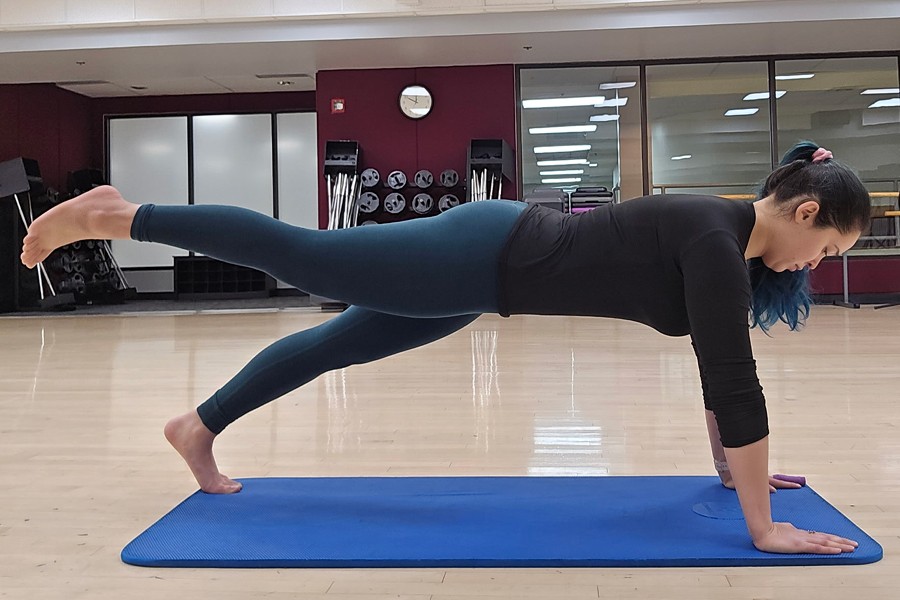
Pilates Hundred: Step-By-Step Instructions
One of the original Pilates movements, this exercise is a great warmup and abdominal strength exercise.
1. Lie down on your back a bring your legs to the reverse tabletop position.
2. Lift your head, neck, and shoulders a few inches up from the floor, keeping your chin tucked and your lower back on the ground.
3. Extend your arms along your sides with the palms facing down.
4. (Optional) Extend your legs to a 45-degree angle, or as high as you can before your spine lifts off the floor.
5. Pump your arms up and down by a few inches five times as you inhale and five times on an exhale.
6. Repeat for 10 rounds, or a total of 100 pumps.
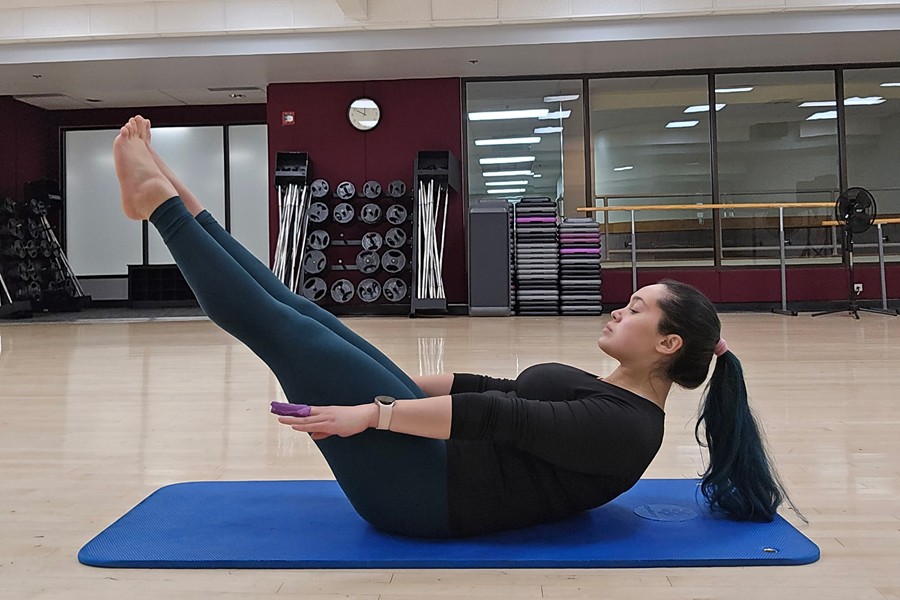
3-5 Pilates home exercises for skiers with a Reformer
When you work with one of our Pilates instructors you have access to a Reformer machine. Some of the exercises we often incorporate include:
Footwork
Pilates footwork on the Reformer describes a type of movement performed on your back with your feet on the footbar or jumpboard. There are many ways to vary footwork based on foot placement and whether you’re pushing through the toes, ball of your foot, or heels.
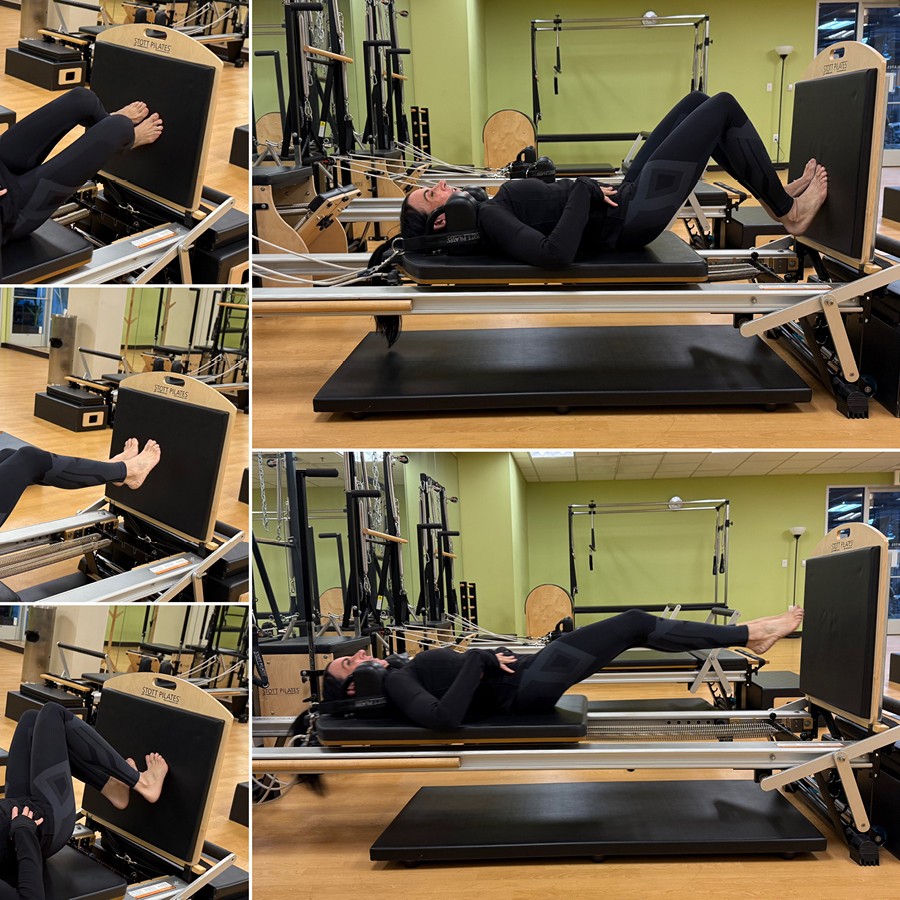
Jumps on a Jumpboard
Jumps on a jumpboard utilize the Reformer carriage and springs to provide a safe and stable way to perform jumping movements. There is an elevated cardiovascular response and a plyometric component to exercise variations.
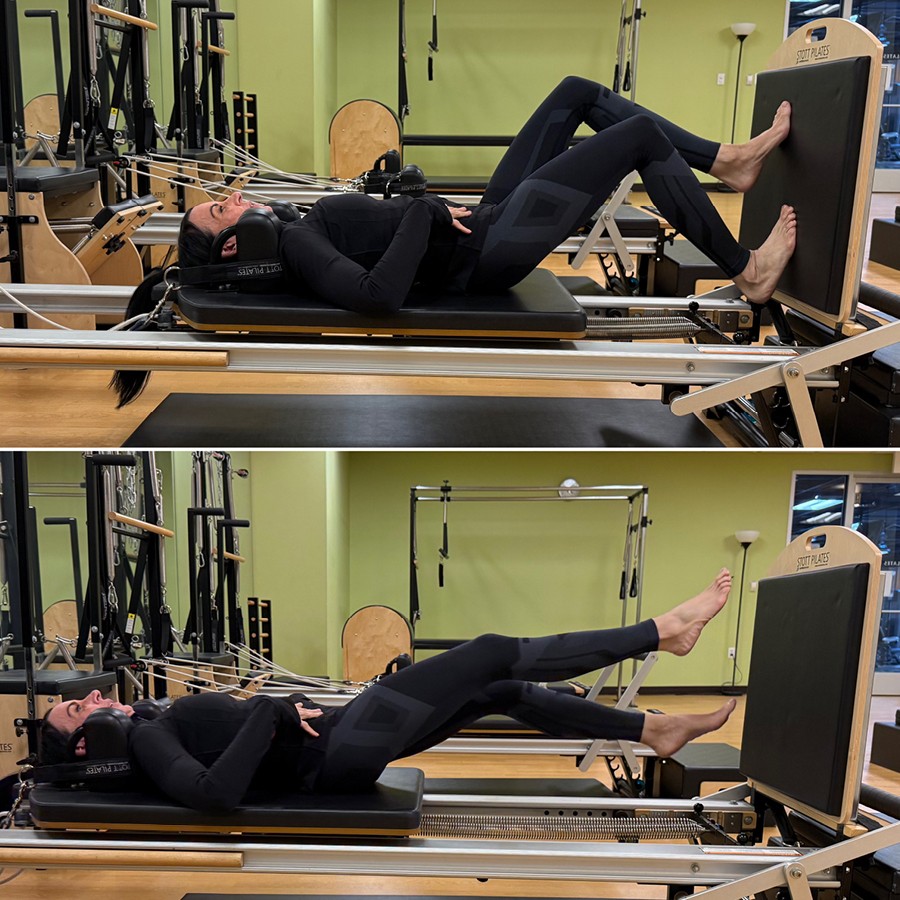
Core Routine
A core routine utilizing the Reformer allows for safe movements to improve core strength with variety of resistance and attachments available.
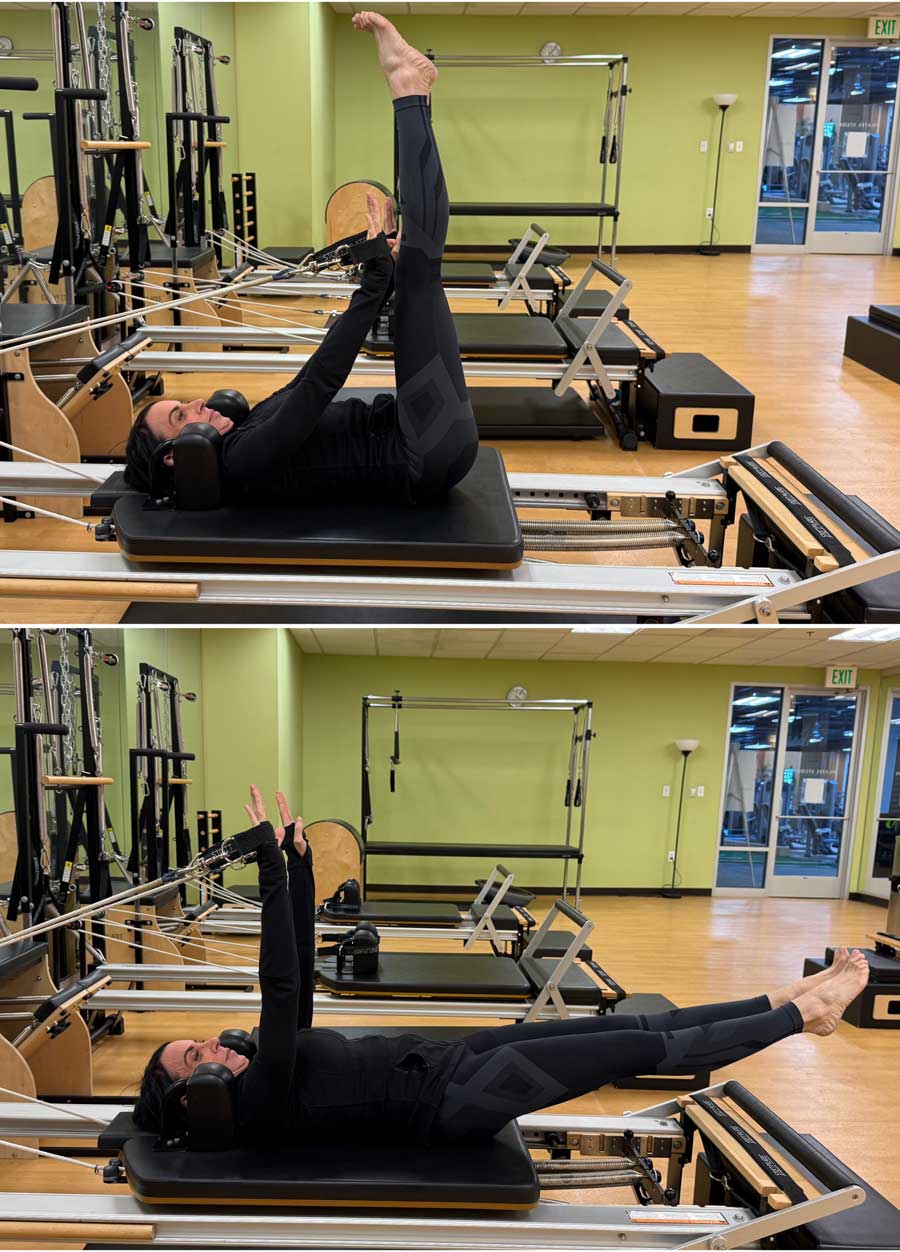

Maria Veidash is the Studio Fitness & Pilates
Coordinator at Colorado Athletic Club Tabor Center
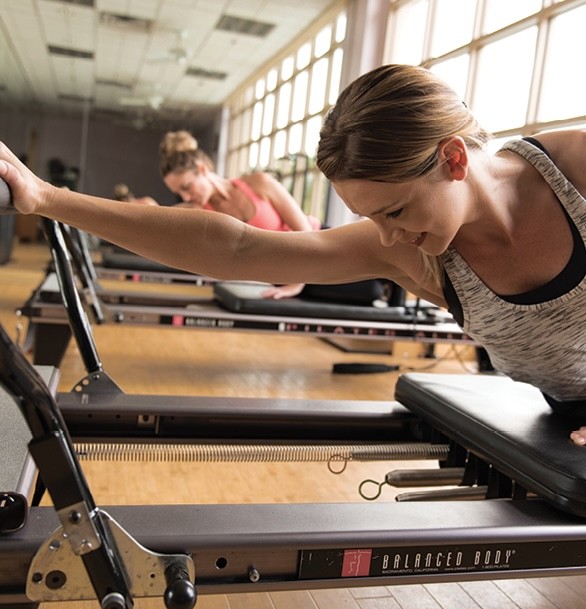
Pilates at Colorado Athletic Club and New Mexico Sports & Wellness
Pilates is a powerful way to build strength, improve flexibility, and enhance overall balance-both physically and mentally. Whether you’re new to movement or a seasoned athlete, Pilates offers a low-impact yet deeply effective workout that focuses on controlled motion, core stability, and mindful connection.
Arrange a pass to visit and learn more about Pilates at CAC
Arrange a pass to visit and learn more about Pilates at NMSW
Check out the Studio Fitness Schedule and Specialty Classes in Colorado or New Mexico today.

